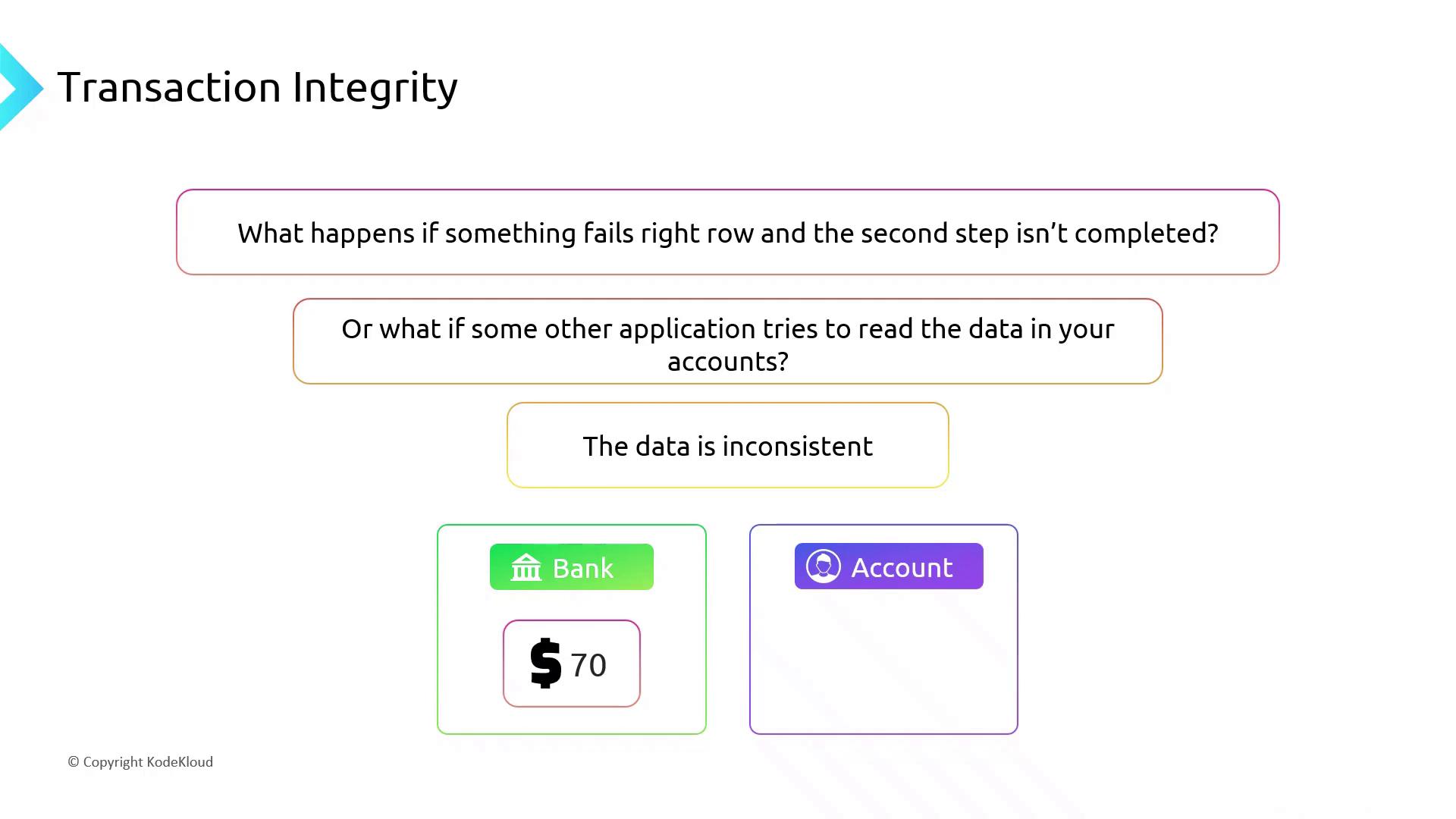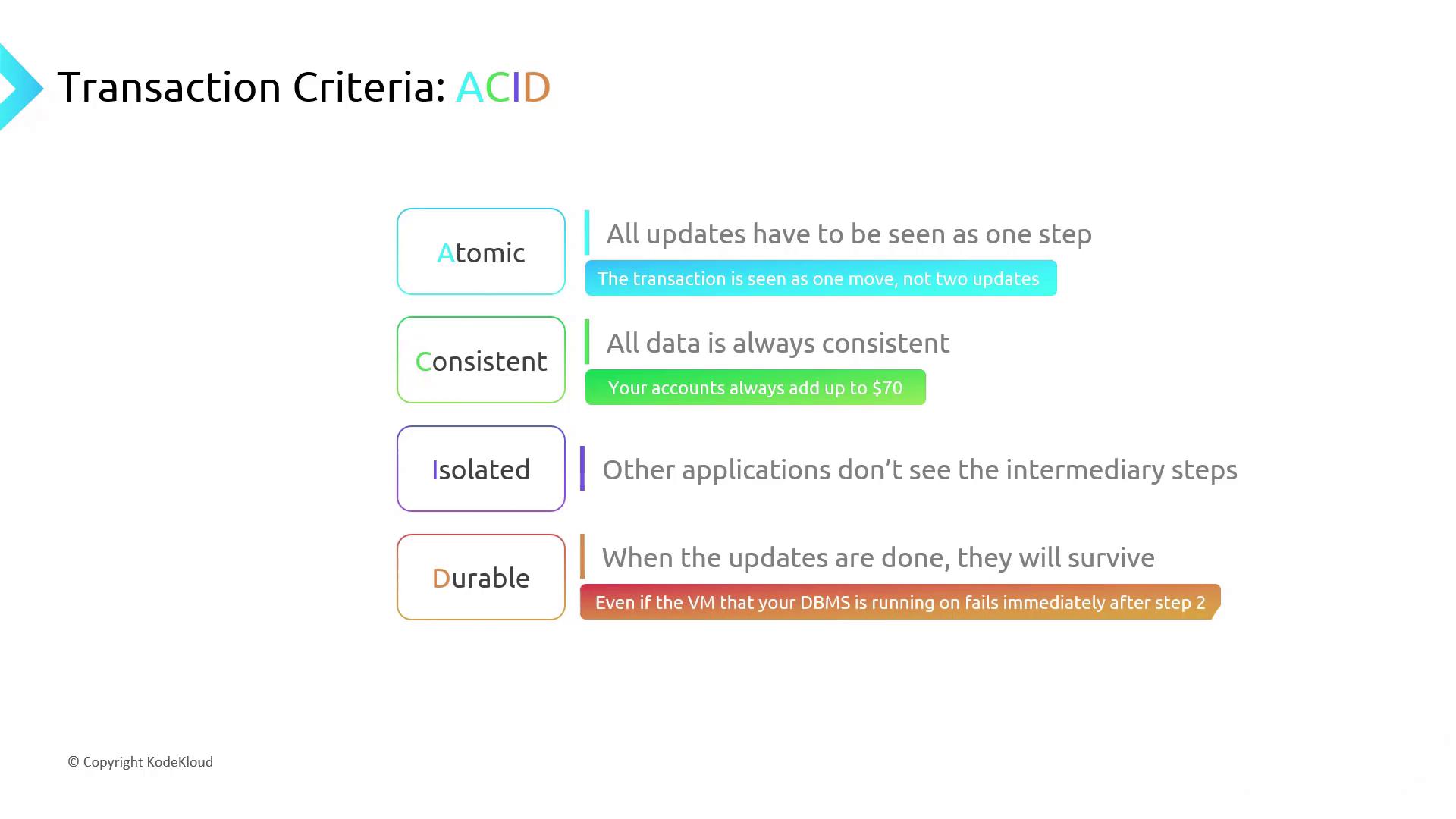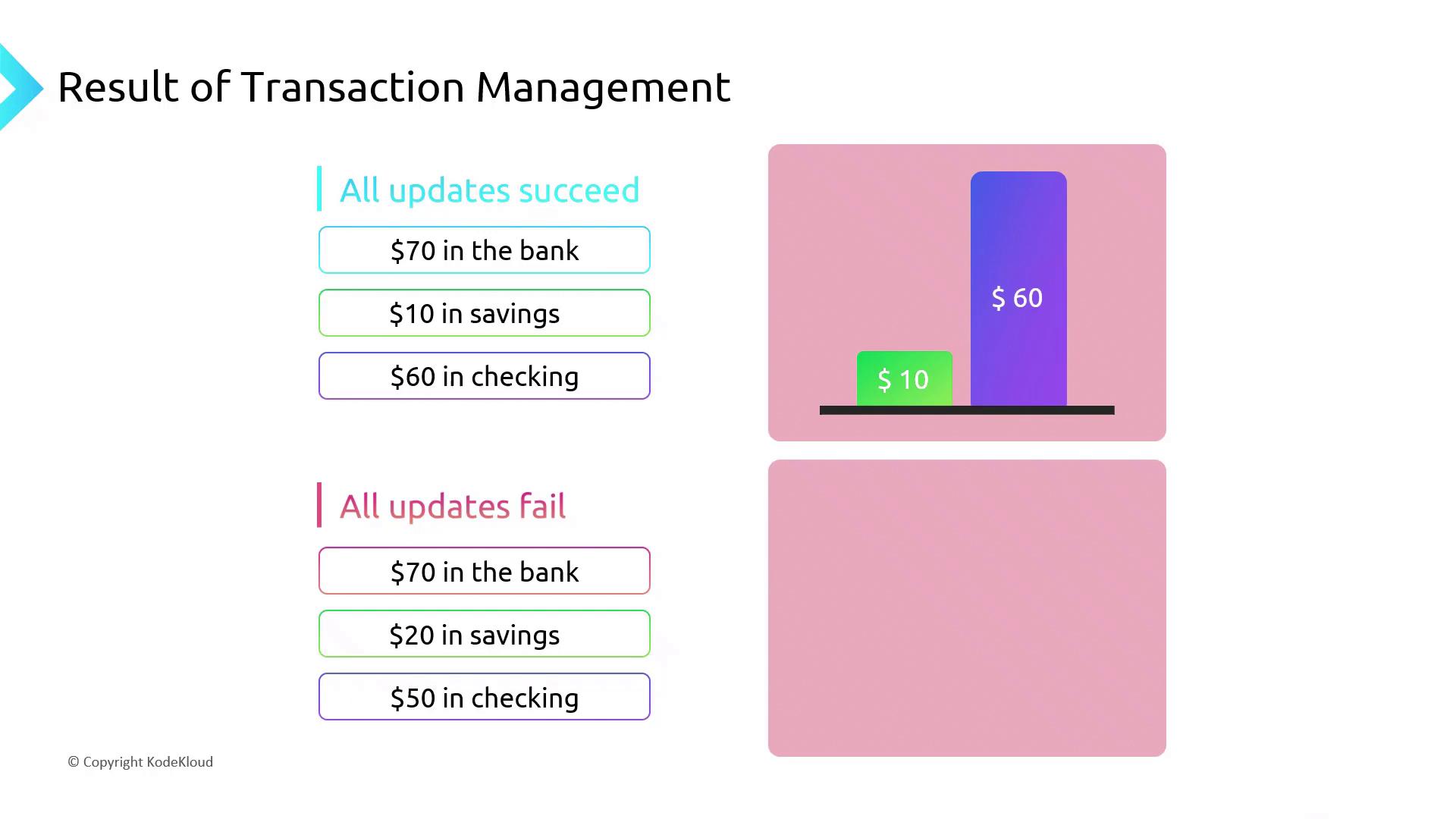DP-900: Microsoft Azure Data Fundamentals
Structured Data
Transaction Intergrity
Maintaining transaction integrity is critical when multiple updates must be applied together in a relational database. In this guide, you’ll learn how to guarantee accurate, reliable, and consistent data using the four ACID properties: Atomicity, Consistency, Isolation, and Durability.
Example: Transferring Funds Between Accounts
Consider two bank accounts represented by rows in a database table:
- Savings: $20
- Checking: $50
Together, these balances total $70—the amount the bank owes you.

To move $10 from your Savings to Checking, you execute a transaction with two updates:
BEGIN TRANSACTION;
-- 1. Subtract $10 from Savings
UPDATE accounts
SET balance = balance - 10
WHERE account_type = 'Savings';
-- 2. Add $10 to Checking
UPDATE accounts
SET balance = balance + 10
WHERE account_type = 'Checking';
COMMIT;
Note
You can also use ROLLBACK to undo changes if any step fails:
ROLLBACK;
Potential Issues Without ACID
- Incomplete transaction: The first update succeeds, but the second one fails, leaving balances inconsistent.
- Interim reads: A third party queries balances after step 1 but before step 2, seeing $10 in savings and $50 in checking (total $60).

ACID Properties Explained
The ACID acronym stands for the four rules that guarantee transaction integrity:
| Property | Description |
|---|---|
| Atomicity | Ensures all updates in a transaction succeed or none do (all-or-nothing). |
| Consistency | Guarantees the database moves from one valid state to another (e.g., total balance remains $70). |
| Isolation | Prevents other operations from seeing intermediate states. |
| Durability | Commits survive system failures; changes persist even after a crash. |

Isolation Levels
Different databases support multiple isolation levels (e.g., Read Committed, Serializable). Choose the level that balances concurrency and consistency for your workload.
Warning
Long-running transactions can block other operations and degrade performance. Keep transactions short and predictable.
Transaction Management: Commit vs. Rollback
At the end of your transaction:
- COMMIT: Applies all updates, resulting in $10 in savings and $60 in checking.
- ROLLBACK: Undoes every change, preserving the original $20 and $50 balances.

Links and References
Watch Video
Watch video content